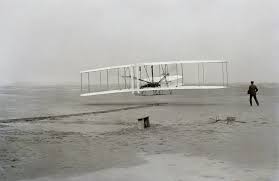
The New York Times once confidently explained why all attempts at flight were doomed from the start. “To build a flying machine,” declared one editorial, “would require the combined and continuous efforts of mathematicians and mechanicians from one million to ten million years.” However, the Wright brothers silenced all the naysayers within eight weeks with their first maiden flight on December 17, 1903.
Something similar happened in the surgical management of Otosclerosis as well. Valsalva from Bologna gave the first description of stapes ankyloses as the cause of hearing loss (1). The founders of actual stapes surgery are Kessel (1876) from Graz and Jena (2). Earlier, there was a fear that opening the oval window would result in destructive damage to the inner ear. However, Jena disproved this with investigations on pigeons. He performed the first transtympanal stapes mobilization and stapedotomy to improve hearing in stapes ankyloses. However, fatal labyrinthitis and lethal intracranial complications made stapes surgery fall into disrepute (3). Stapedotomy was discouraged worldwide. It went to such an extent that Adam Politzer declared in the 6th International Otology Congress held in 1899 that “Stapes surgery was useless, dangerous, and unethical!” His views were supported by Siebenmann and Moure (4). As stapedotomy was perceived as too dangerous, Passov suggested promontory fenestration in 1897 (5). However, it did not gain much acceptance. It was Floderus who suggested creating a window in the vestibular labyrinth in 1989, which was propagated by Jenkin in 1913 at the “Fenestration of the lateral semicircular canal” (6,7).
With the advent of operating microscopes, it was further developed by Nylen and Holmgren (8,9). Holmgren’s student Sourdille designed a two-stage operation called “tympano-labyrintho-pexie,” which provided lasting hearing improvement in the majority of patients (10,11). However, it was Lempert in 1938 who simplified semicircular canal fenestration into a one-stage operation, standardized it, and taught it to a large number of surgeons (12). Lempert’s era lasted for almost three decades (13). It was Shea who defied all naysayers of stapedotomy by performing this surgery on May 1, 1956, on a female patient with Otosclerosis (14). He covered the oval window with a vein graft after stapedotomy and used a Teflon stapes prosthesis designed by him along with his engineering friend Treace for the first time (15, 16).
As Nicholas Klein aptly said, “First they ignore you. Then they ridicule you. And then they attack you and want to burn you. And then they build monuments to you.” The history of medicine is replete with several such stories.
References:
1. Kessel J: Über die Durchschnei- dung des Steigbügelmuskels beim Menschen und über die Extraction des Steigbügels resp. der Columel- la bei Thieren. Arch Ohrenheilkd 1876;11:199–217.
2. Kessel J: Über die vordere Tenoto- mie, Mobilisierung und Extraction des Steigbügels; zitiert in Grunert C: Wissenschaftliche Rundschau. Arch Ohrenheilkd 1897;42:57–58.
3. Politzer A: Über Extraktion des Steigbügels mit Demonstration histol- ogischer Präparate. Presented at the 6th International Otologic Congress, London. Arch Ohrenh 1899;47:223. 4. Arnold W, Häusler R (eds): Oto- sclerosis and Stapes Surgery. Adv Otorhinolaryngol. Basel, Karger, 2007, vol 65, pp 1–5.
5. Passow H: Operative Anlegung einer Öffnung in die mediale Pauken- höhlenwand bei Stapes- Ankylose. Diskussionsbemerkung zum Vortrag von R. Panse: Die operative Be- handlung hochgra- diger Schwer- hörigkeit. Verhandl Deutsch Otol Gesselsch 1897;6:141–143.
6. Floderus B: Bidrag till stigbygelan- kylosens operativa radikalbehandlung. Nord Med Ark 1899;32: 1–17. 7. Jenkins GJ: Otosclerosis: Certain clinical features and experimental op- erative procedures. Trans XVIIth In- ter Congr Med London 1913;16:609– 618.
8. Nylén CO: The microscope in au- ral surgery, its first use and later de- velopment. Acta Otolaryngol Suppl (Stockh) 1954;116.
9. Holmgren G: The surgery of oto- sclerosis. Ann Otol Rhinol Laryngol 1937;46:3–12.
10. Holmgren G: Some experiences in the surgery of otosclerosis. Acta Otolaryngol 1923;5:460–466.
11. Sourdille M: New technique in the surgical treatment of severe and pro- gressive deafness from oto- sclero- sis. Bull NY Acad Med 1937;13:673– 691.
12. Lempert J: Improvement of hear- ing in cases of otosclerosis: a new one stage surgical technique. Arch Otola- yngol 1938;28:42–97.
13. Shambaugh GE: Julius Lempert and the fenestration operation. Am J Otol 1995;16:247–252.
14. Shea JJ: A personal history of sta- pedectomy. Am J Otol 1998;19:2–12. 15. Shea J: Diskussionsbemerkung: Symposium on stapes mobilization. Laryngoscope 1956;66: 775–777. 16. Shea JJ: Fenestration of the oval window. Ann Otol Rhinol Laryngol 1958;67:932–951.
Leave a reply
















Leave a reply